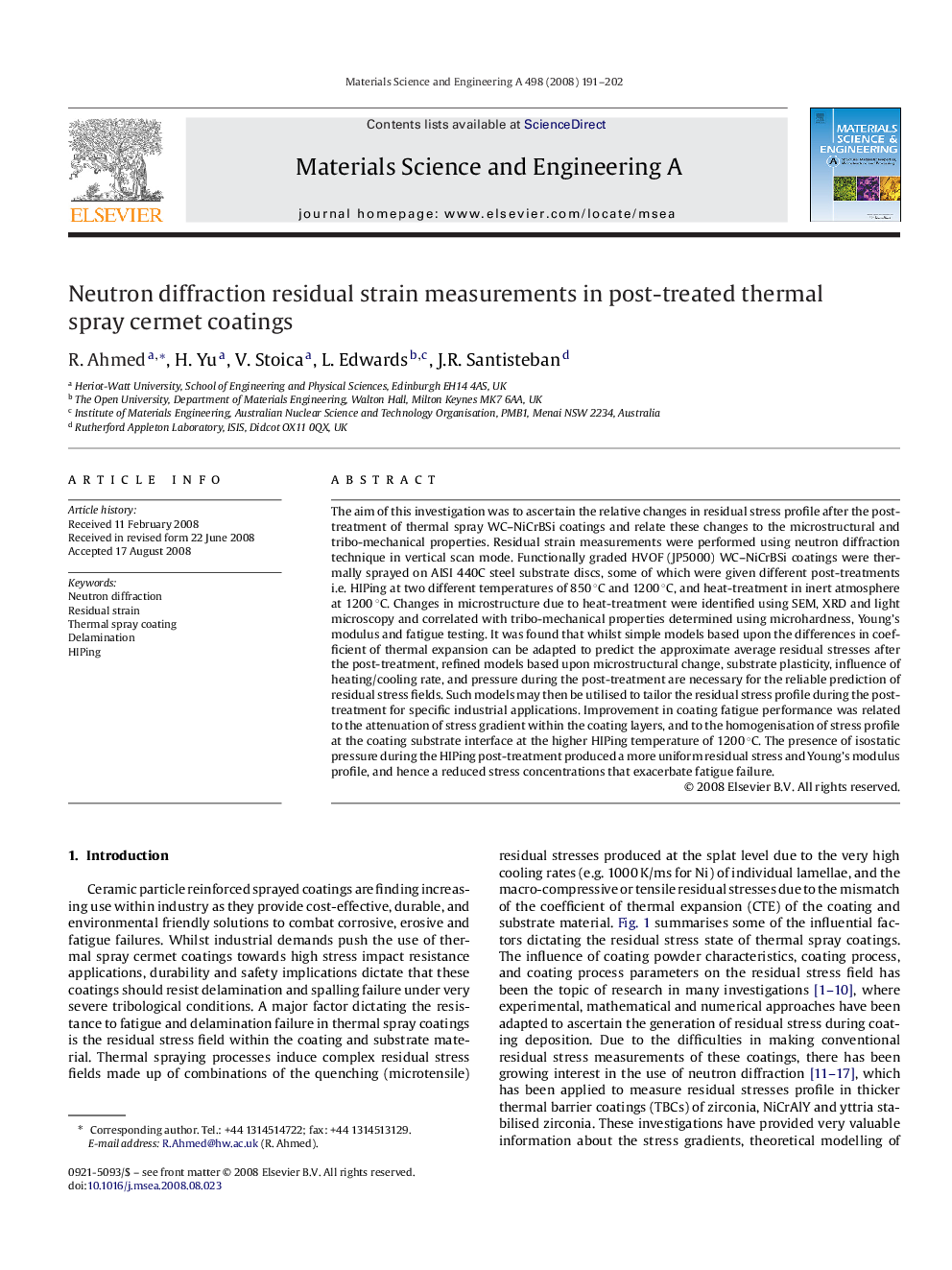| کد مقاله | کد نشریه | سال انتشار | مقاله انگلیسی | نسخه تمام متن |
|---|---|---|---|---|
| 1581425 | 1514860 | 2008 | 12 صفحه PDF | دانلود رایگان |

The aim of this investigation was to ascertain the relative changes in residual stress profile after the post-treatment of thermal spray WC–NiCrBSi coatings and relate these changes to the microstructural and tribo-mechanical properties. Residual strain measurements were performed using neutron diffraction technique in vertical scan mode. Functionally graded HVOF (JP5000) WC–NiCrBSi coatings were thermally sprayed on AISI 440C steel substrate discs, some of which were given different post-treatments i.e. HIPing at two different temperatures of 850 °C and 1200 °C, and heat-treatment in inert atmosphere at 1200 °C. Changes in microstructure due to heat-treatment were identified using SEM, XRD and light microscopy and correlated with tribo-mechanical properties determined using microhardness, Young’s modulus and fatigue testing. It was found that whilst simple models based upon the differences in coefficient of thermal expansion can be adapted to predict the approximate average residual stresses after the post-treatment, refined models based upon microstructural change, substrate plasticity, influence of heating/cooling rate, and pressure during the post-treatment are necessary for the reliable prediction of residual stress fields. Such models may then be utilised to tailor the residual stress profile during the post-treatment for specific industrial applications. Improvement in coating fatigue performance was related to the attenuation of stress gradient within the coating layers, and to the homogenisation of stress profile at the coating substrate interface at the higher HIPing temperature of 1200 °C. The presence of isostatic pressure during the HIPing post-treatment produced a more uniform residual stress and Young’s modulus profile, and hence a reduced stress concentrations that exacerbate fatigue failure.
Journal: Materials Science and Engineering: A - Volume 498, Issues 1–2, 20 December 2008, Pages 191–202